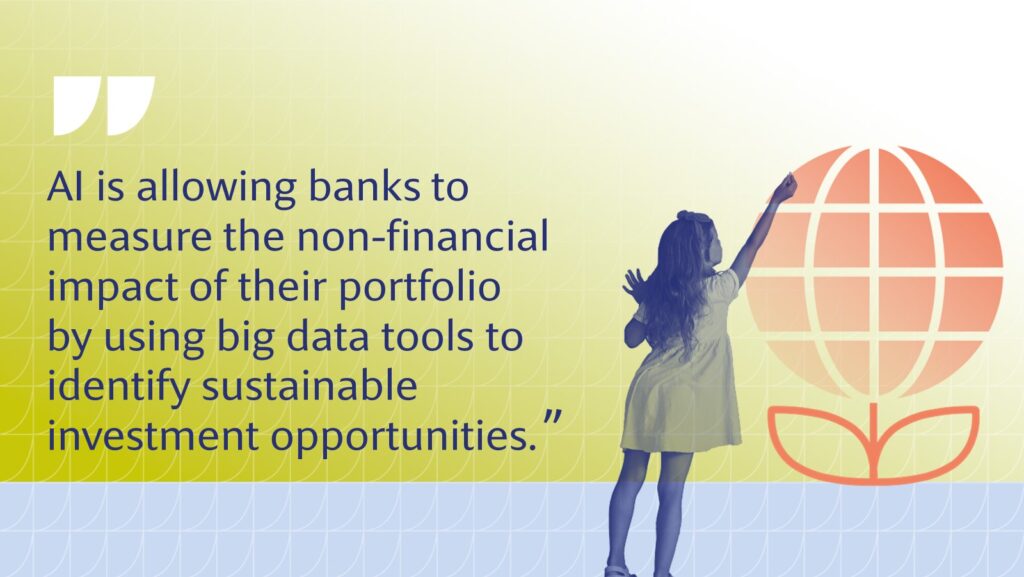
Leaner and greener banking is needed in the race to net zero
If we are serious about keeping 1.5 alive, the banking sector has a central role to play in the urgent action needed to combat climate change.

If we are serious about keeping 1.5 alive, the banking sector has a central role to play in the urgent action needed to combat climate change. Regulators, investors, and consumers are putting banks under increasing pressure to reduce their carbon emissions and become more transparent in the environmental impact of their financial services.
Banks are increasingly becoming subject to stringent regulatory changes. Financial players failing to take action as regulation tightens risk being left behind by their market peers. Regulators across Europe and the U.S. are poised to increasingly crack down on misrepresented sustainability statements. The EU’s Sustainable Finance Disclosure Regulation (SFDR) has already introduced stricter disclosure requirements and criteria for investments classified as sustainable, essentially putting into law what financial firms can claim to be green products. UK and U.S. regulators are following closely behind, putting pressure on financial players across the globe to make meaningful actions toward greening their operations and reducing the carbon impact of their financial flows.
Pressure is simultaneously coming from consumers who are voting with their wallets when it comes to choosing banks that reflect their values. McKinsey & Company reported that by 2019, about 14 percent of total client-driven revenues were controlled by consumers whose banking preferences were influenced by concern about purpose and sustainability, amounting to a worth of circa $300 billion. Research by Kearney concurs, finding that one in four European consumers (24 per cent) are likely to switch providers if their bank is not engaged in ‘ESG’ issues. Generation Z is expected to continue to drive this shift, armed with a long-term investing approach and an appetite for ethical and sustainable banking options.
We have already seen new players entering this market. Green-conscious customers have triggered the creation of 27 operational green banks in 12 countries last year, with 25 more already set to follow this year. Three out of every five (61%) banking customers in the U.K. said they want their banking provider to “do more to create a positive, social and environmental impact”. Better still if a bank can develop financial services that empower customers to take control of their own carbon footprint. As consumers, we can see this increasingly fed into bank’s offerings. Impact accounts which assess the account holders’ carbon footprint, reward credit cards and green deposit accounts are several green banking offerings now out there.
To respond to these increasing pressures, banks must first look at their direct operations. Legacy IT infrastructure is responsible for a large proportion of a bank’s carbon emissions. Instead, migrating infrastructure to public cloud hyperscalers means not only less hardware and floor space, but also less electricity to run it all – offering a leaner and greener alternative. Public cloud centres are increasingly built with energy efficiency as a priority, be it lighting, cooling, computer consumption or equipment degeneration. And the more banks lean on cloud infrastructure and the software as a service (SaaS) platforms that run on it, the more the sector generates green economies of scales. In fact, Microsoft estimates that businesses using their cloud infrastructure generate up to 98% lower carbon emissions than operating their own data centres.
Inefficient architecture and processes not only reduce the speed of operations but are the cause of high-carbon output. This digitisation of banking through Software as a Service offerings is opening an opportunity to remove the weigh-up between business vs. environmental choices, offering an opportunity for banks to be innovative, agile and scale quickly while optimising both financial and carbon efficiencies. Tools like GoCodeGreen also help banks to identify platform providers that calculate the carbon emissions of their software in both build and operate mode and have externally audited processes and architectures for carbon efficiency.
However, it cannot stop at a bank’s direct operations. All industries are set to be subject to demand to report on their wider emissions i.e., those that they finance. Banks must harness technology and data to offer their retail and corporate customers the tools to measure their own carbon impact. This insight and awareness of their ESG impact are vital if companies and customers are to mitigate and reach their net-zero targets.
With climate risk now embedded across investment portfolios, wealth and asset managers are also increasingly looking towards technologies, such as artificial intelligence (AI), to evaluate sustainable investing opportunities. This is an increasingly big market, with analysis by Bloomberg predicting that global ESG assets under management are on track to exceed $53 trillion by 2025, representing more than a third of the projected total. AI is allowing banks to measure the non-financial impact – such as environmental, diversity, corporate and governance figures – of their portfolio by using big data tools to identify sustainable investment opportunities.
Whatever the industry, digitization continues to find itself at the core of innovative sustainable solutions. Banks themselves are in a unique position to influence the transition to a low-carbon economy, by not only transitioning their own operations to low-carbon alternatives but also reducing the emissions of companies and partners they finance. Demand for climate action is now coming from all sides of the table – ranging from regulators to consumers – placing climate action firmly on banks’ agendas. As a result, banks are realising that sustainability must be fully embedded throughout a bank’s business models to achieve the progress needed. And it will continue to be innovation and technology that offers the key to ensuring banks are set to meet their net zero goals.
First published as an Exclusive interview in Net Zero Investor: https://www.netzeroinvestor.net/news-and-views/exclusive-leaner-and-greener-banking-needed-in-the-race-to-net-zero
Related events

Temenos at Sibos 2023
18 – 21 Sep, 2023
Stand D30, MTCC Toronto